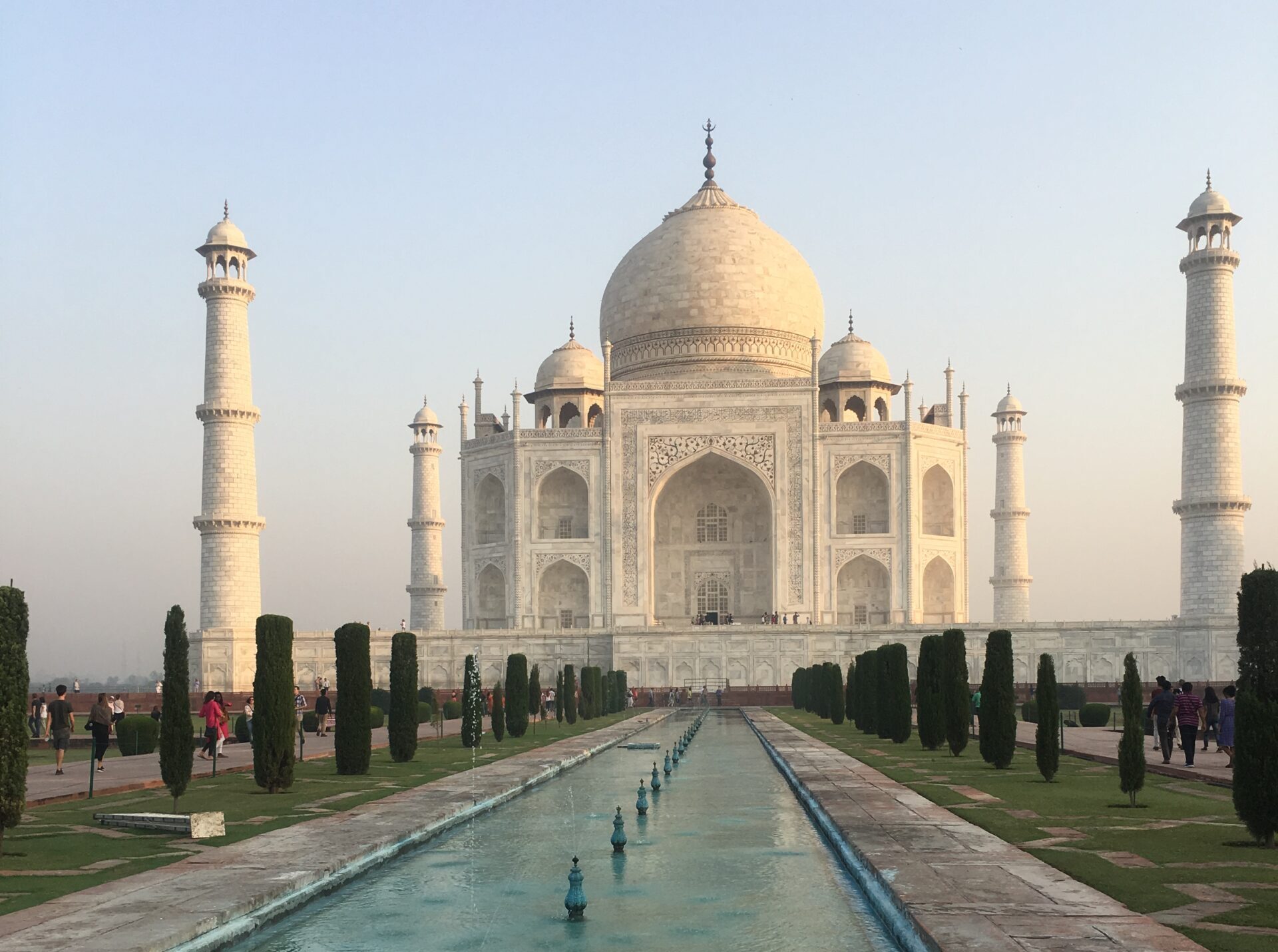Is India Worth Visiting? 27 BEST Reasons To Visit In 2025
Are you planning your next trip and wondering ‘is India worth visiting’? If you call yourself a world traveler, then you definitely need to take a trip to India!
On a trip to India you’ll experience a symphony of cultures, colors, and contradictions. It’s a place where the ancient meets modern, where spirituality is as tangible as the busy streets, and where every corner holds a story worth hearing.
I’ve visited India many times, and I even lived in Mumbai for a year. As a world traveler, I can attest that India is a special destination worth planning a trip to at some point. This is list is just some of the cool and unique sights that India has to offer.
Is India Worth Visiting?
Yes, India is definitely worth visiting. No matter your interests there is something for everyone in the diverse and captivating country.
In fact, there are endless reasons to visit India! It is a vibrant country with so much to offer travelers from amazing food to beautiful beaches to magnificent monuments. However, for some people it can be a bit overwhelming. The busy streets, loud traffic, and seemingly unorganized ways of getting things done can be a lot for someone unaccustomed to India.
Here are 27 reasons not to let the chaos prevent you from taking the leap to visit India.
27 Reasons Why You Should Visit India & Best Things To Do
From ancient history to architectural and heritage sites to spiritual enlightenment to beautiful beaches and mountains, India offers a little bit of everything.
1. See a tiger on safari
Witnessing a tiger in its natural habitat is incredible! I had always thought of Africa when I considered going on safari, but an Indian safari has a lot to offer with the added benefit of a lower price tag.
Some National Parks that offer safaris with the chance to see a tiger include Ranthambore National Park, Jim Corbett National Park, Kanha National Park, Bandhavgarh National Park, and Panna National Park.

2. Visit the Taj Mahal at Sunrise
It’s worth the early wake up call to see the Taj Mahal first thing so it’s a more peaceful and serene experience. This iconic monument is an architecture marvel that deserves a spot on your India itinerary.
It’s important to plan ahead and secure your entry tickets in advance (especially during peak tourist season). The Taj Mahal opens at sunrise, and only a limited number of visitors are allowed during this time. You can purchase tickets online through the official website of the Archaeological Survey of India (ASI) or opt for authorized travel agencies.
The Eastern Gate, also known as the “VIP Gate,” opens 30 minutes before sunrise, allowing early visitors to catch the first rays of the sun illuminating the Taj Mahal’s pristine white marble. Make sure to check the sunrise timings for your visit date and arrive at the gate at least 45 minutes before the scheduled sunrise to beat the crowds.
To capture iconic photographs of the Taj Mahal, head to the “Princess Diana Bench” or the “Lady Di Bench.” Located at the far end of the garden complex, this vantage point offers an unobstructed view of the Taj Mahal with its reflection shimmering in the serene waters of the central pool.
The golden triangle is a popular route for first time visitors to India. It includes traveling from Delhi to the Taj Mahal in Agra to Jaipur.

3. Experience the royal splendor of Rajasthan
Explore the stellar palaces and forts of Rajasthan, a northern state in India that is not to be missed, especially the cities of Jaipur, Udaipur, Jodhpur, and Jaisalmer.
Jaipur is known as the Pink City and features some spectacular royal sights, including Amber Fort, City Palace, and Hawa Mahal.
Udaipur has dreamy romantic vibes despite still having the buzzing busy energy of a typical Indian city. Be sure to visit the magnificent City Palace. Read more about what to do in the City of Lakes here.
Jodhpur is the Blue City. Don’t miss the impressive Mehrangarh Fort, which has an appearance in The Dark Knight Rises.
Jaisalmer is unique, even in Rajasthan, as a fort city in the dessert. Ride the dunes, go glamping under the stars, and enjoy the narrow fort lanes.
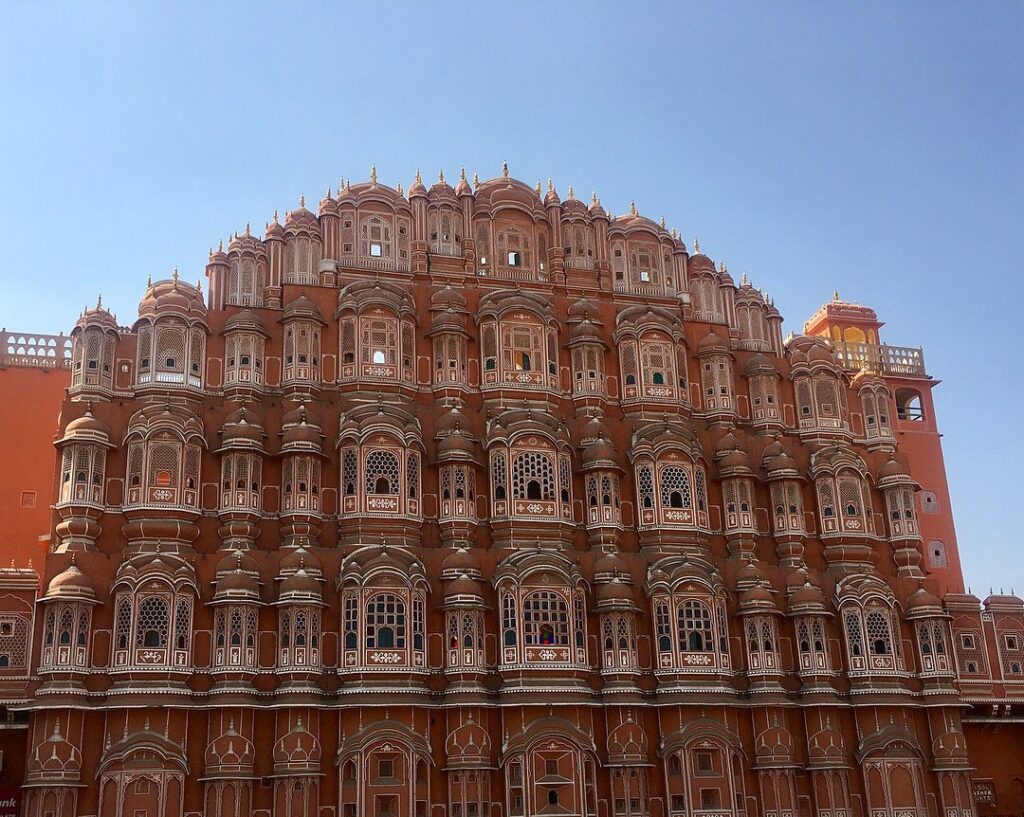
4. Stay on a houseboat in Kerala
The unique experience of staying on houseboat in Kerala’s backwaters is a must-do in India. Plan it for a time in your trip when you’re keen to get some downtime. The houseboat will have a staff to cook you meals and a captain to navigate through the backwaters so all you need to do is sit back, relax, and enjoy.
Read more about houseboats and other itinerary suggestions for Kerala here.
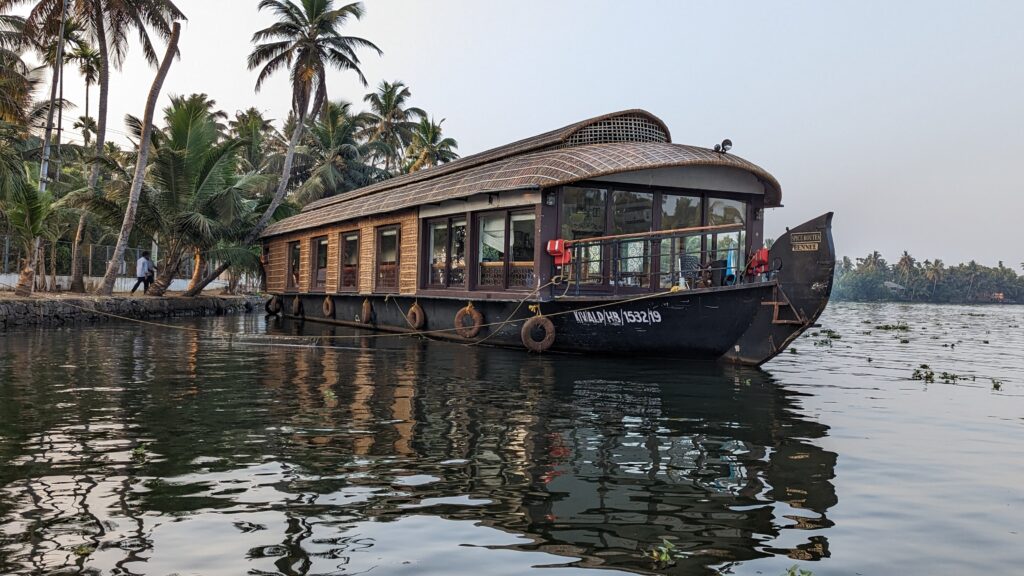
5. Connect with your Inner Spirituality
You don’t need to be religious to appreciate the spirituality throughout India. There are several major religions in India; Hinduism, Islam, Christianity, Sikhism, Buddhism, and Jainism. Each religion can be felt in the experiences around you as you travel the country, from the many temples to the prominence of idols to the rituals practiced.
There’s much to admire about the deep devotion even if you don’t follow the religion for yourself. Personally, I connect with the practice of yoga as a means of mediation and inner reflection.
Rishikesh, often referred to as the “Yoga Capital of the World,” is a haven for spiritual seekers. The serene surroundings and positive vibes make it an ideal place to delve into yoga and meditation practices. Numerous ashrams and retreat centers offer courses and workshops conducted by experienced gurus, guiding you through the ancient teachings of yoga and meditation.
6. Go white water rafting on the Ganges
In addition to yogis, adventure travelers should also include Rishikesh on their India Itinerary. The Ganges river flowing through this Himalayan town creates the perfect spot for a thrilling rafting expedition. This half day (4 hour) White Water Rafting trip by White World Expeditions is a great way to spend an active afternoon in Rishikesh.
Bonus: Rishikesh offers a unique camping experience, with tent accommodations (ranging from basic to luxury) on the serene white sand riverbanks. As the sun sets behind the mountains, the Ganges mirrors the starlit sky, creating a special ambiance.
7. Hike to the Living Root Bridges
The living root bridges show the bio-engineering practiced by the indigenous tribes of Meghalaya. They are crafted by guiding the aerial roots of the Ficus elastica tree across streams and rivers, allowing them to entwine and grow, forming strong natural bridges over time. This unique construction method ensures that the bridges become stronger with age, enduring the region’s monsoon rains.
One of the most iconic living root bridges in Meghalaya is the Double-Decker Bridge of Nongriat. Located in the village of Nongriat, this extraordinary bridge consists of two levels, allowing travelers to traverse the Umshiang River and admire the breathtaking landscapes from different vantage points and witness the community’s unique way of life.
Learn more about the lesser known northeast state of Meghalaya here, including more information on the Living Root Bridge hike.
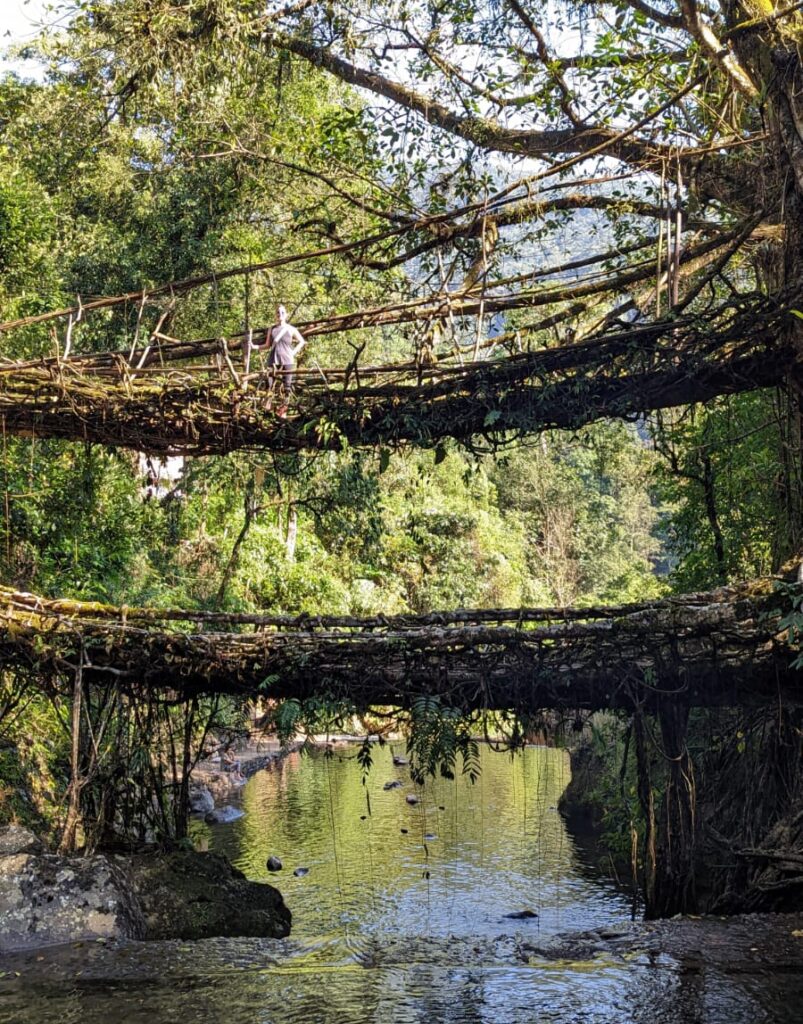
8. Hike the Himalayas
The world’s highest mountain range runs along the north of India. You can visit beautiful mountain towns, like Manali or Shimla, or go for challenging hikes to experience the heart of the Himalayas.
Manali, known as the “Valley of Gods,” offers a blend of adventure and relaxation. Rohtang Pass, just a few hours from Manali, showcases snow-capped peaks and offers thrilling activities like skiing and snowboarding.
For the more adventurous, head up to Spiti Valley and hike the Valley of Flowers or tackle the week long Great Kashmir Lakes Trek that takes you to pristine alpine lakes surrounded by towering peaks.
9. Visit the Golden Temple in Amritsar
The Golden Temple, located in Punjab, is a Sikh pilgrimage site. Think of it as the Vatican City of the Sikhs.
Partaking in langar is one of the most profound experiences at the Golden Temple. Langar is essentially a communal kitchen that serves free meals to all visitors, regardless of their background. It exemplifies the foundational tenant of Sikhism called Seva, which means selfless service. And shows the importance of equality, since everyone sits together on the floor, sharing a meal as equals.
The temple’s architecture is a blend of Islamic and Hindu styles, reflecting the spirit of inclusivity that Guru Arjan Sahib envisioned. The four entrances symbolize the openness of Sikhism to people from all walks of life, welcoming devotees of all faiths to seek solace and spiritual enlightenment.
10. Take a luxurious train journey
Experience the best of Indian hospitality and luxury through a classic train journey, where the grandeur of the past meets the indulgence of the present. Traveling by train in India is an essential part of immersing yourself in the culture. India boasts one of the largest and most diverse railway networks in the world, connecting bustling metropolises with serene countryside and remote villages.
You can find a train journey that best suits your travel style, whether it’s exploring historical sites, indulging in culinary delights, or basking in the lap of luxury. Book well in advance, as they often have limited availability!
The Palace on Wheels takes you on a week long journey through Rajasthan, showcasing the architectural marvels, desert landscapes, and vibrant culture of this majestic state. Step into elegantly appointed cabins reminiscent of princely chambers, dine on gourmet cuisine, and traverse to Jaipur, Udaipur, and Jaisalmer.
Embark on the Deccan Odyssey, a luxury train that travels the Deccan Plateau in style. This journey introduces you to India’s diverse heritage, from the ancient caves of Ajanta and Ellora to the glorious beaches of Goa.
The Maharajas’ Express is a masterpiece of luxury train travel, defining opulence on wheels. With meticulously designed suites, lavish lounges, and gourmet dining, the train immerses you in an unparalleled journey through India’s cultural gems. Ride to iconic destinations like Agra, Jaipur, Varanasi, and more, all while being pampered by world-class amenities and personalized service.
Discover the heritage and charm of South India aboard the Golden Chariot. This luxury train offers two captivating itineraries – “Pride of the South” and “Southern Splendor” – each unveiling the cultural riches of the region. From the architectural marvels of Hampi to the pristine beaches of Goa, the Golden Chariot presents a journey that marries comfort with exploration.
11. Visit the temples in Hampi
Hampi’s history can be traced back to the 14th century when it flourished as the Vijayanagara Empire’s capital. Today the ruins and must-see temples include: Virupaksha Temple, Vittala Temple Complex, and the Lotus Mahal.
You can take a full day tour with a guide to explain the fascinating history and mythology in the legendary lost city of Hampi.
Complete your trip to Hampi with a stay in a unique luxury hotel like Evolve Back.
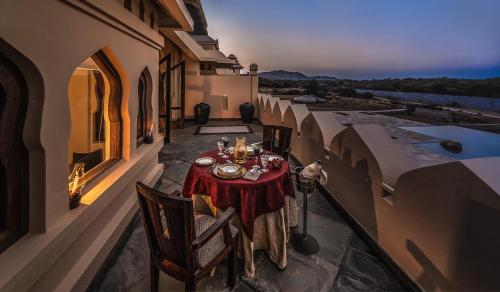
12. Behold the pristine beaches of Andaman & Nicobar
This cluster of 572 tropical islands in the Bay of Bengal is popular for scuba diving and snorkeling.
To experience beach bliss you need to spend a day at Radhanagar Beach on Havelock Island. Known as one of Asia’s best beaches, Radhanagar impresses visitors with its turquoise waters and pristine sands. Elephant Beach is another popular beach for snorkeling, jet skiing, and kayaking.
For the ultimate beach getaway, book your stay at Taj Exotica Resort and Spa, Andamans. Located on Radhanagar Beach, this luxury resort has a rejuvenating spa and world-class dining.
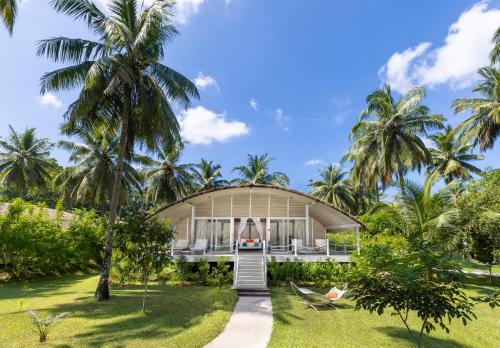
13. Witness Evening Arti in Varansi
Known as the spiritual capital of India, Varanasi is home to divine rituals, traditions, and enchanting ceremonies. One such captivating spectacle is the Evening Aarti. As the sun dips below the horizon the ghats of Varanasi come alive, drawing travelers and devotees from all over the world.
The Aarti is a gesture of gratitude, seeking blessings from the Ganges river and offering prayers. For Hindus, the Ganges River represents the source of life, purification, and liberation from the cycle of birth and death.
14. Visit the Khajuraho Temples
These exquisite temples, constructed between the 9th and 11th centuries, are famed for their intricate carvings that depict a harmonious blend of spirituality, mythology, and sensuality. Some say they were the inspiration behind the Kama Sutra because of the carvings depicting explicit sexual positions, sometimes with multiple partners.
Learn more about what to know for a visit to the Khajuraho Temples.
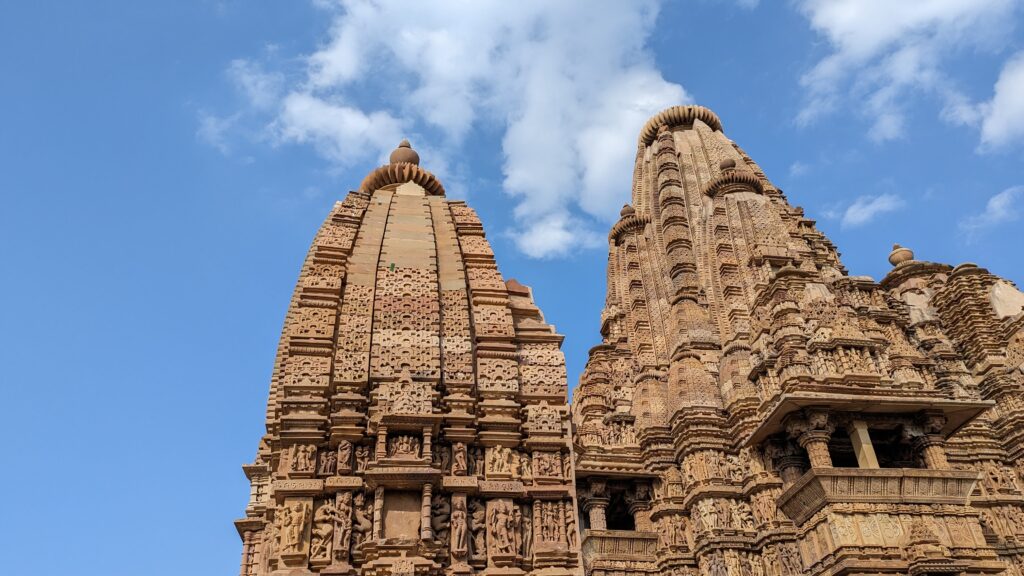
15. Watch a Cricket Match
There are two religions in India, cricket and Bollywood. Even though cricket came from England, India is the adopted home of cricket with easily over 1 billion people following the sport.
Cricket can be a complicated sport to get into. There is a 5-day version called test cricket which is for the purest fans. There is also a 1-day version and a 3 hour version.
If you are new to cricket, check out the 3 hour version with an IPL match. The IPL is the second most valuable sport league in the world. Its season runs usually in April and May and you’ll have the opportunity to catch matches all over the country.
Stadiums with the best atmosphere include Mumbai (Wankhede) and Bangalore (Chinnaswamy). Eden Gardens in Calcutta is another iconic stadium, known as the adopted home of cricket.
Fun fact: the 3rd most followed athlete on Instagram is Virat Kohli, also called King Kohli. He was the previous caption of Indian Cricket team and plays for Bangalore during the IPL season.

16. Go see a Bollywood Movie
Watching a commercial movie in a single screen theater will be an experience you can only get in India! Make sure to join in and stand up, dance, and whistle when everyone else does.
Learn more about the cultural significance of Bollywood by taking a tour of a movie studio like the famous Mehboob Studio in Bandra or this highly rated half day tour of SJ Studios.
17. Enjoy flavorful food
Bust your myth about what Indian food truly means! Often what Americans think of Indian food is from North India. But most Indian states have their distinctly unique cuisines so be sure to try a restaurant with local cuisine in each destination you visit. Look for thali restaurants, which will offer a bunch of local dishes from curries, salads, rice, and dahl all in one.
Everything from biryani to chaat is rich in flavor. While there’s no shortage of spices in Indian food, that doesn’t mean it’s all too hot to enjoy.
Don’t be scared of trying street eats! Vada pav is a personal favorite of mine. Drinking unfiltered water may upset travelers’ stomachs, but if the food has been heated enough to be cooked it’s likely safe to consume.
Taking a cooking class is a fun way to learn more about the variety of spices and how each one is used. If you visit Jaipur you can cook with a local family and learn more about home life in India.
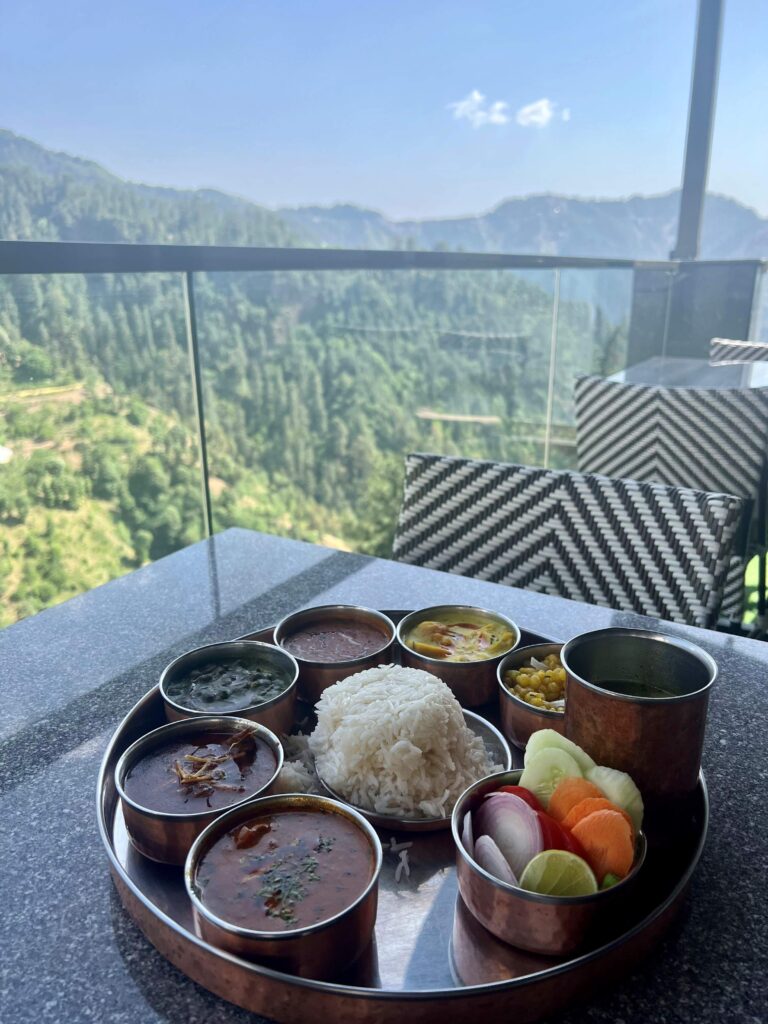
18. Experience many cultures within one country
Culture, religion, and language all vary by region in India. There are over 120 languages spoken in India, not including local dialects. You can travel a hundred miles and come across a whole new language, style of cooking, and religious practices. This means there’s endless possibilities to learn new traditions and witness how all these differences coexist.
19. Explore biodiversity hotspots
Biodiversity hotspots are regions with an exceptionally high concentration of endemic species (those found nowhere else on Earth). These areas are often characterized by unique ecosystems that have evolved over millions of years. India has 4 biodiversity hotspots that are well worth a visit.
The Western Ghats stretch along the western coast of India from the dense rainforests of Kerala to the misty valleys of Coorg.
The Eastern Himalayas, spanning across India, Nepal, and Bhutan, have an wide range of ecosystems, from subtropical forests to alpine meadows.
The Indo-Burma hotspot is a biogeographical marvel, covering parts of northeastern India, Myanmar, and extending into Southeast Asia.
The Sundaland region in Southeast Asia includes the Nicobar Islands.
20. Visit Buddhist monasteries in the Himalayas
The Himalayas are home to many Buddhist monasteries, each with its distinctive history and significance. Popular destinations for monastery exploration include Leh-Ladakh, Spiti Valley, Sikkim, and Bhutan.
A visit to a Buddhist monastery is incomplete without attending the morning prayers. Wake up early and immerse yourself in the melodic chants and rhythmic rituals performed by the resident monks. This soul-stirring experience fosters a deep connection with the spiritual essence of the Himalayas and its monastic way of life.
21. Experience one of the wettest places on planet earth
Cherapunjee (also known as Sohra) regularly records the most rainfall in a year, creating spectacular waterfalls around every corner, from Nohkalikai Falls to Dainthlen Falls.
Book a stay at Polo Orchid Resort to make your trip extra special with views of the lush green landscape and a relaxing spa.
Learn more about this unique destination and the top things to do in Cherapunjee.

22. Visit the salt flats in Runn of Kutch
The Runn of Kutch is a seasonal salt marsh, which transforms into a sparkling desert during the dry months of winter. The region experiences a distinctive phenomenon, as water evaporates, leaving behind a pristine white sheet of salt crystals that stretch as far as the eye can see.
The Runn of Kutch is divided into two parts – the Great Rann and the Little Rann. The Great Rann is a vast expanse of salt flats that spans over 7,500 square kilometers, while the Little Rann offers a more rugged and isolated experience. Both regions present distinct landscapes and wildlife encounters, making the journey through the salt desert an adventure like no other.
One of the best times to visit the Runn of Kutch is during the Rann Utsav, a vibrant festival that celebrates the region’s culture and heritage. From November to February, the salt flats come alive with colorful tents, traditional music, dance performances, and handicraft exhibitions. The Utsav is an opportunity to witness the rich cultural tapestry of Gujarat, showcasing the artistic brilliance of the local communities.
23. Visit the mangrove forests of Sunderbans
This UNESCO World Heritage Site is a unique ecosystem, where land, water, and air blend to create a haven for diverse wildlife. This is the perfect place for travelers seeking an offbeat adventure in untouched nature.
The Sunderbans is home to the elusive Royal Bengal Tiger. Here you have the thrilling chance to spot these majestic cats in their natural habitat. A boat safari along the winding creeks and riverbanks presents an opportunity to witness these enigmatic creatures.
24. Visit Assam and/or Darjeeling tea gardens
If you are a tea enthusiast Assam and Darjeeling are worth a visit in India.
Assam, with its fertile plains and verdant landscapes, is a haven for tea lovers. The region produces robust, full-bodied tea known for its malty flavor and vibrant aroma. Explore vast tea estates like the Halmari Tea Estate, where you can witness the entire tea-making process, from plucking the leaves to sipping the perfect cup.
Nestled in the foothills of the Himalayas, Darjeeling produces the renowned Darjeeling tea, often referred to as the “Champagne of Teas.” With its delicate aroma and nuanced flavors, Darjeeling tea is a favorite among tea enthusiasts. The town of Darjeeling exudes colonial charm and offers breathtaking views of the Himalayan peaks.
Bonus: Go for a unique train ride on the Toy Train on Darjeeling Himalayan Railway, a UNESCO World Heritage Site.
25. See the only wild Asiatic Lions in the world at Gir Forest
In the heart of Gujarat lies the Gir Forest National Park, home to the mighty Asiatic lions. The combined efforts of local communities, forest authorities, and conservation organizations led to the protection of the fragile ecosystem to ensure the survival of the Asiatic lions.
The Asiatic lion once roamed freely across vast regions of Asia. However, excessive hunting and habitat loss pushed these majestic creatures to the brink of extinction, leaving just a few in the Gir Forest by the early 1900s. Thanks to the efforts of conservationists and the support of local communities, the population has rebounded, and Gir Forest now holds the distinction of being the last place on earth the Asiatic lion lives in the wild.
Jeep safaris and guided tours provide thrilling opportunities to observe the lions in their natural habitat, creating an unforgettable experience for wildlife enthusiasts and travelers alike.
26. Get your Astrological chart read
India is steeped in spirituality and ancient wisdom, with numerous destinations where you can get your astrological chart read. Cities like Varanasi, Rishikesh, and Pushkar are known for their spiritual vibes, making them ideal places to connect with experienced astrologers who can offer profound insights.
Please beware of scammers when looking to do this. You can get recommendations from locals and fellow travelers. I asked a guide we really liked in Jodhpur and he introduced us to his personal trusted astrologer who wouldn’t even accept payment or tips from us.
27. Learn about tribal cultures
India is a BIG country with a myriad of cultures and traditions. It’s home to a diverse array of indigenous tribes, each with its unique way of life, beliefs, and practices. Delving into India’s tribal culture is like stepping into a world of ancient traditions, vibrant art forms, and deep-rooted connections with nature.
Northeast India is a collection of 8 states, each with its own unique indigenous tribal cultures and tribal protection baked into the local laws.
You can also venture to the central and eastern parts of India to experience the heartlands of tribal culture in states like Odisha, Chhattisgarh, Jharkhand, and Madhya Pradesh.
As you interact with indigenous communities, learn their stories, and experience their art forms, you’ll find yourself humbled by their close bond with nature and their resilience in preserving their way of life.
Getting Around India
Travel logistics in India can sometimes be intimidating but with a little pre-planning, you’ll be zooming around the country. Use MakeMyTrip.com to help you determine the best way to get around.
By Train
I highly recommend including a train journey on your India trip. Book in advance to secure your tickets or a small percentage of tickets are reserved for last minute bookings called tatkal (which means “urgent” in Hindi), and open up 1 day in advance at 10:00am.
By Rental Car
Zoomcar is India’s largest (and in most places, only) rental car network. Please note that driving in India can be quite challenging so I recommend hiring a driver instead of renting a car.
By Air
Because India is such a big country, flying is usually the easiest way to get between cities in India, if you are traveling to another state (and, if its in budget). There are plenty of domestic airlines to get you around quickly.
By Tour
You can take a small group tour with G Adventures. There are options for visiting the golden triangle in 8 days, seeing South India highlights in 15 days, Rajasthan & Varanasi in 20 days, and many more tours of varying lengths. If you want to experience India but don’t want the hassle of dealing with planning your own logistics or don’t want to travel solo, then check out G Adventures great options!
Weigh the pros and cons of traveling in a group vs. on your own here.
Best Time To Visit India
With its varying climates and distinct regions, India offers a unique experience in each season, making it worth visiting any time. However, winter is arguably the best time to visit India. While the northern regions experience lower temperatures, the southern parts have comfortable weather ideal for beach vacations.
More specifically, planning a trip between October and February is ideal for most of the country because it generally avoids the extreme heat of summer and the torrential rain of the monsoons.
For more information on where to travel in India at what time of year, click here: The best time to visit India & FAQs about the weather in India.
India FAQs
Here are the answers to some top questions for traveling in India. If you have even more questions check out my ultimate travel guide to India.
How many days do you need in India?
For a first time visitor you need at least 8-10 days in India. A couple weeks is ideal and 3 weeks is even better! You could spend a whole year in India and not hit up all my recommendations.
Is India a friendly country to visit?
Yes! In India, the guest is God. Hospitality is engrained in the culture and visitors are welcomed with open arms. It’s easy to strike up a conversation with a local and they are usually eager to talk to foreigners. For top tier service on your travels, I recommend staying at Taj properties.
Is it difficult to travel in India?
It can be logistically challenging to travel in India if you aren’t familiar with the country. But with a little patience it’s not too difficult to figure out!
Sometimes you just need to embrace the chaos! As a type A person this was difficult for me, to be honest. However, once I learned to lean into the chaos I started to enjoy the energy of India more. There’s always a flurry of activity on the streets and it somehow all flows together. Try taking a time lapse of the Dadar flower market in Mumbai for a colorful depiction of a busy city morning.
Despite the crowded and sometimes disorderly surroundings, India is worth visiting!
If you don’t want the stress of planning a trip to India, use my travel planning services. I will create a one-of-a-kind India itinerary designed for your interests and budget.
TL;DR: Is India Worth Visiting?
Embrace the chaos and let the magic of India unfold as you embark on a journey that will forever hold a special place in your heart. Regardless of what you’re looking for in a trip India will deliver, from beaches to mountains, food and art, to history and culture. India is undeniably worth visiting!

